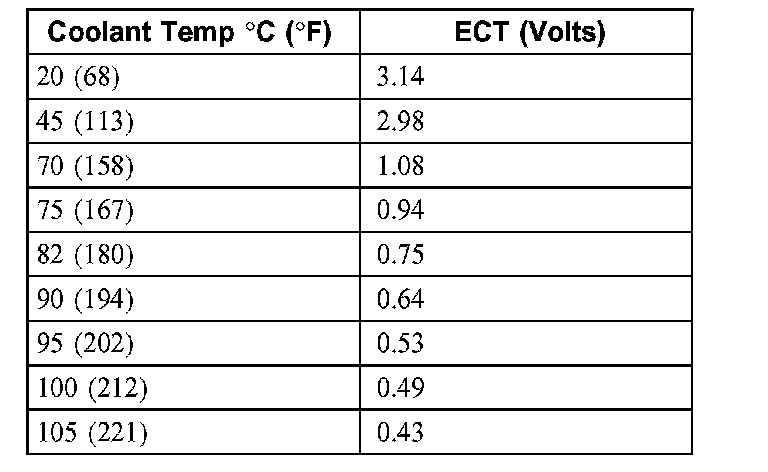Thermostat: Testing and Inspection
ThermostatA new thermostat should be installed only after the following electrical and mechanical tests have been carried out.
Thermostat-Electrical Test (3.0L Only)
NOTE: The electrical thermostat test is most accurate if carried out indoors at less than 37.8°C (100°F) ambient air. This test can be carried out with or without the hood open and with the engine warm or cold.
1. Check the engine coolant level. Fill as needed.
2. With the ignition OFF, attach the Rotunda 73 Digital Multimeter to the engine coolant temperature (ECT) sensor. It may be used to monitor sensor voltage values between 0-5 volts.
3. NOTE: Running this test with the vehicle in gear or with the A/C compressor clutch engaged (running) will cause incorrect diagnosis.
Place the transmission in PARK (P) or NEUTRAL (N).

4. Start the engine and allow the engine to idle throughout this test. Allow the engine to run for two minutes, then record the ECT voltage. Record the ECT voltage every 60 seconds. When the ECT voltage trend changes direction or only changes slightly (0.03 volt or less) from the previous reading, record this as the thermostat opening voltage. Use the voltage and corresponding coolant temperature chart listed below.
5. If the thermostat opening voltage is greater than 0.75 volt and less than 78°C (173°F), install a new thermostat.
6. If the thermostat opening voltage is less than 0.75 volt and greater than 78°C (173°F), the thermostat is good and a new thermostat is not required. GO to Symptom Chart. Symptom Related Diagnostic Procedures
Thermostat-Mechanical Test
1. Remove the thermostat housing.
2. Immerse the thermostat housing and thermostat in a boiling antifreeze and water mixture.
3. See the General Specifications chart for thermostat opening temperatures. General Specifications